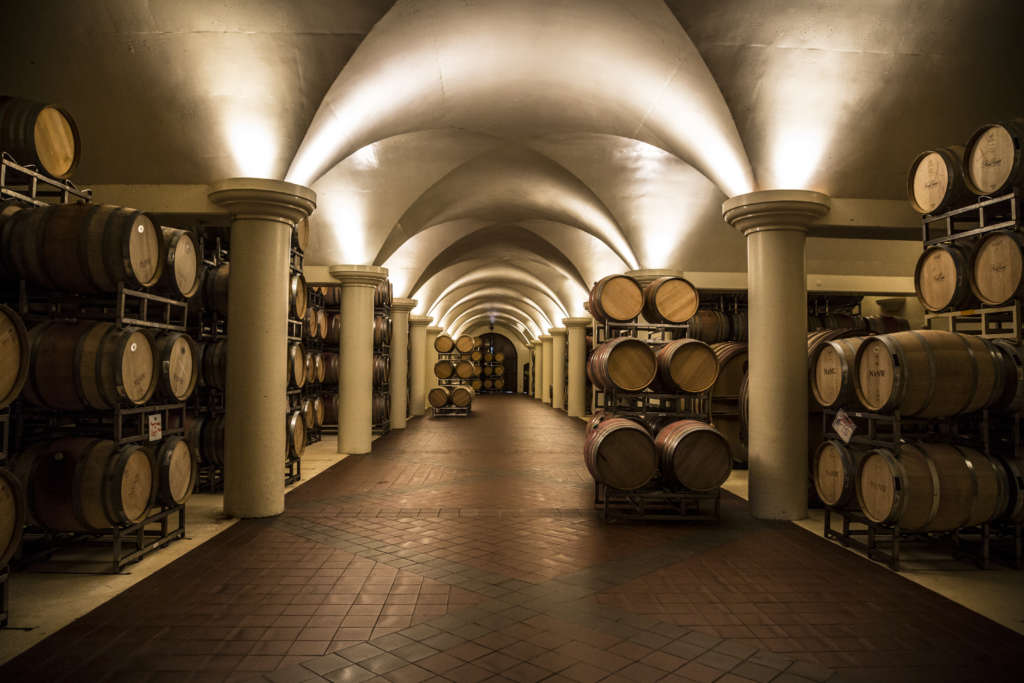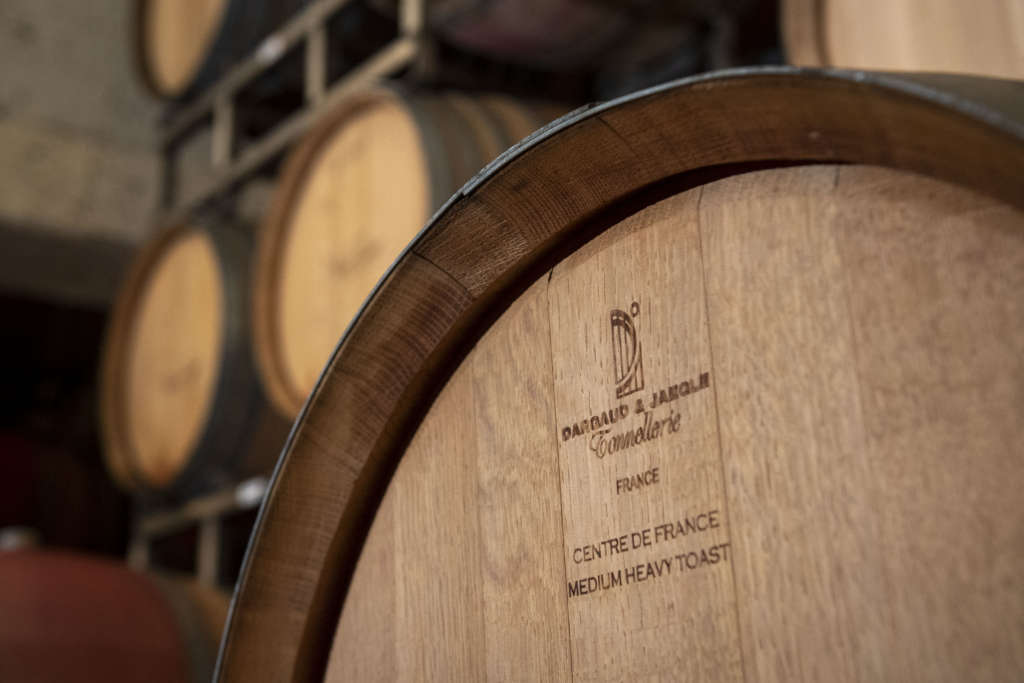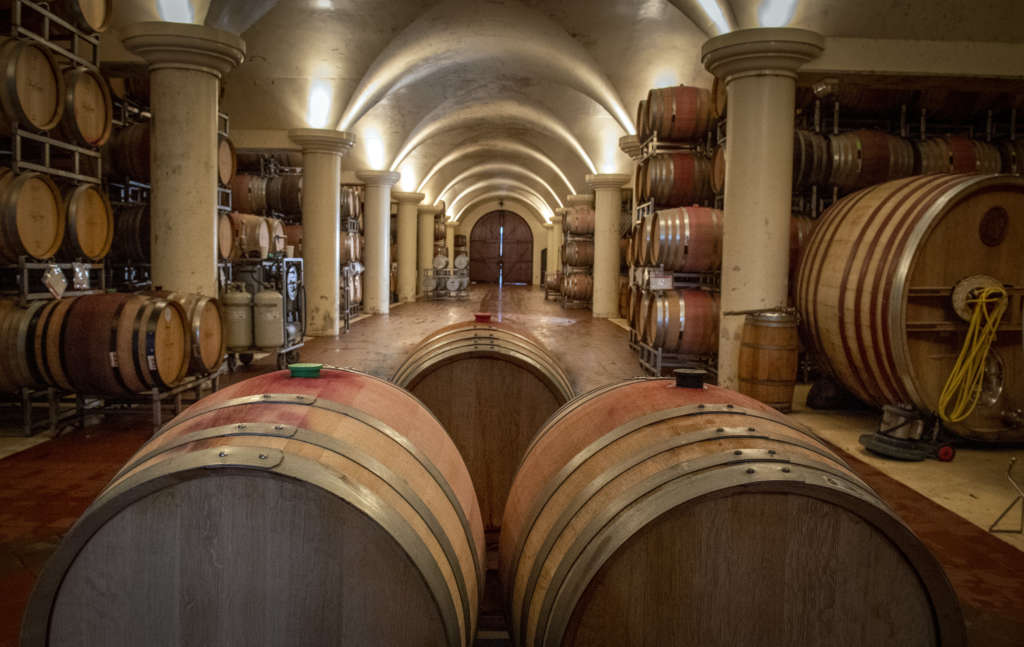A wine barrel is deceptively simple in appearance but plays a key role in making wines of distinction.
All barrels are not created equal. To the winemakers at King Estate, choosing the right barrel is as important as every other decision that goes into making fine wine. But, as with so much in winemaking, barrel selection is more complex than one might think. We wanted to take a deeper dive, so we turned to King Estate’s resident barrel expert, Assistant Winemaker Matt Danner.
Picking the right barrel
“With red wine in particular, barrels can leave a major thumbprint on the wine,” says Matt, who oversees the barrel program at King Estate. “The barrel gives us the opportunity to highlight the fruit and bring out what makes each wine unique.”

King Estate is home to some 3,700 wine barrels that are custom made for us by about 20 different coopers, or barrel makers. We may buy as few as two and as many as 50 from any single cooper, or barrel maker. Barrels range in cost from just under $900 apiece to almost $1,300. Most of our barrels – about 95% – are French. Just 3% are American and 2% Hungarian.

Terroir affects wood just like it does vines and wines. The soil and climate of each specific forest produce distinctive characteristics in the wood. When oak trees are grown in rocky soil, the trees struggle for nutrients and thus grow slower and produce more compact, tighter wood grains. Tight grain barrels result in gradual tannin integration with the wine and benefit from extended aging to reach their full potential.
Why French oak?
French oak is tighter grained and produces softer tannins, offering more nuanced flavors and aromas, such as baking spice, graham and brown sugar. French oak is prized for its ability to provide framework for the wine while bringing out unique features of the fruit. American oak contains higher concentrations of lactones which can easily overpower a wine. It contributes more astringency, with robust flavors of dark chocolate, vanilla, fresh herbs and coconut. While it is too powerful for Pinot Noir, American oak works well with Cabernet Sauvignon and Syrah. Hungarian oak is from the same species as the French but displays more vanilla, coffee, chocolate and black pepper.

Every year King Estate orders about 500 new barrels as we cycle them through the program. A wine uses about 50% of the oak in a barrel per year. By the time the barrel is four years old it is considered a neutral barrel. At that point it still has some influence but far less than when it was brand new.
From tree to barrel
Making a barrel can be as time consuming as making the wine that goes into it. After the tree is harvested, the wood is milled into staves that are then aged two to three years. They can be bent into the barrel shape by soaking in water or by applying heat. Once the barrel is formed, it is toasted, typically by placing it over an open flame. Toasting allows the sugars in the wood to caramelize. At higher toast levels flavors of coffee and chocolate can emerge.
Barrel aging allows the wine to interact with the wood as well as the tiny amount of oxygen that permeates it. The process helps soften wine’s bitter tannins while imparting the nutty and earthen flavors of the oak.
To barrel or not to barrel
Not all wine spends time in the barrel. As a general rule of thumb, red wines are barreled and white wines are not, but for every rule there is an exception. Oregon Chardonnay is known for being lightly oaked if it is barreled at all, in contrast to what we have come to expect from California Chardonnay which often exhibits strong oak influences. King Estate Paradox Pinot Gris, our only oaked Pinot Gris, is aged in 100% new French oak for three months. Paradox has cultivated a loyal fan base that appreciates the wine’s roundness and structure with notes of toast and sweet oak imparted by the barrel.
Where the barrel really struts is stuff is in the making of red wine. The finest barrels with tight grains are designed to not “show themselves” or reveal their character for the first year that they hold the wine. And after 18 months, the wine isn’t going to get much benefit but the risk of spoilage increases. That’s why one typically sees a range of 12 to 18 months for time in barrel.

What is “new oak”?
At King Estate, all red wine spends time in oak, but at different levels of intensity, or age of barrel. Typically Pinot Noir is aged in 25% new oak. That means that 25% of the wine in the barrel is aging in brand new French oak barrels. We incorporate a mix of wine that has been aged in one-year-old and two-year-old barrels into each lot of wine to bring the overall oak intensity to 40%.
When you pour a glass of King Estate wine, you may not be thinking about the terroir, the bottle, the cork, the aging, the oak or the barrel. And that’s OK, because we’ve got it covered. All you need to do is sit back, relax, and enjoy the wine.
